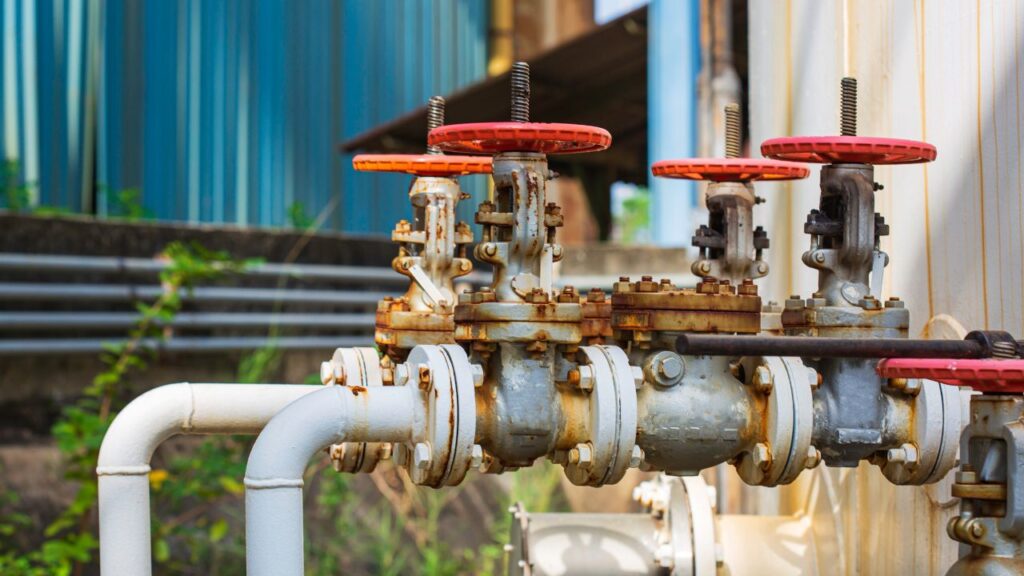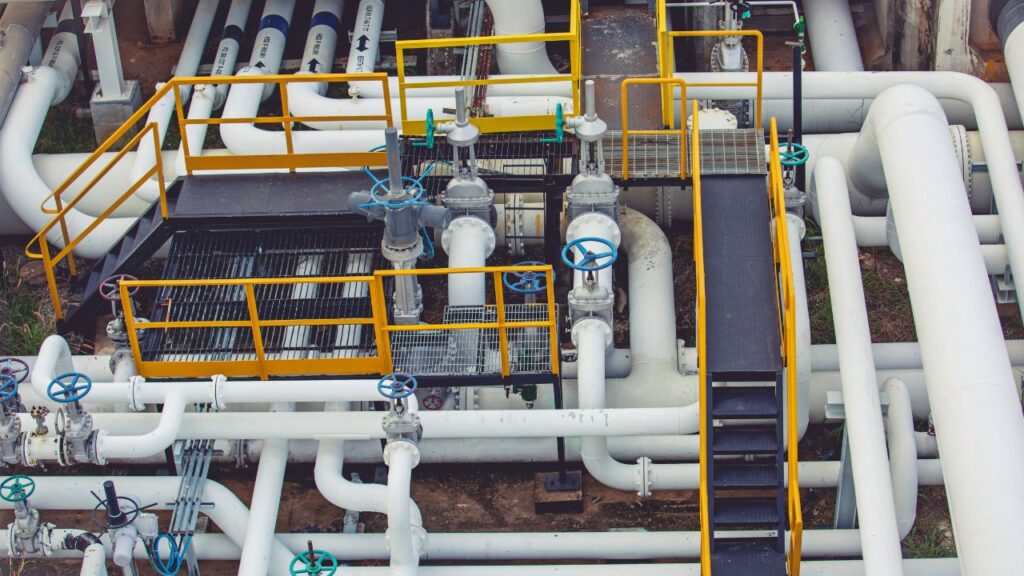Tap into Success – Zip Code Estimates for Plumbing Excellence!
- Accurancy
- Efficiency
- Transparency
- Customization
- Time Saving
- Professionalism
- Cost Control

Ensuring a reliable and efficient gas supply is crucial for apartment buildings, and understanding the factors influencing gas line costs is essential for property owners and managers. From initial installation to potential upgrades or repairs, estimating gas line costs requires a comprehensive understanding of various considerations. In this article, we will explore the key factors involved in estimating gas line costs for apartment buildings.

The size and layout of an apartment building play a pivotal role in determining the intricacies of the gas line system. Larger buildings, with multiple floors and intricate layouts, necessitate a more extensive network of gas pipes. The complexity arises from the need to reach various corners of the building efficiently. This increased scale not only contributes to higher material costs but also requires a skilled labor force to navigate the layout intricacies, impacting overall project expenses.
Adhering to local building codes and regulations is a non-negotiable aspect of any gas line installation or modification. Municipalities enforce these codes to ensure the safety of occupants and properties. Compliance often involves additional costs, including specialized materials that meet regulatory standards, mandatory inspections by certified professionals, and obtaining permits. The investment in meeting these regulatory requirements is crucial, as it guarantees the gas line system’s safety and legality.
The selection of materials for gas lines is a critical decision that significantly influences overall costs. Common options, such as black steel, copper, and flexible piping, each come with their unique advantages and associated expenses. Black steel is durable but may be heavier and require more labor for installation. Copper is corrosion-resistant and malleable, but it tends to be costlier. Flexible piping, while often more affordable and easier to install, may have considerations for long-term durability. Local market prices, ease of installation, and material durability are key factors that guide the decision-making process, impacting the overall project budget.
The distance from the apartment building to the gas source or main supply line directly affects project costs. Longer distances require more piping to cover the span, contributing to increased material costs and additional labor. Maintaining consistent gas pressure throughout the building becomes a consideration, potentially requiring the installation of pressure regulation equipment. These factors highlight the importance of accurately assessing the distance to the gas source during the planning phase to avoid unexpected costs during implementation.

The number and variety of gas-powered appliances within an apartment building introduce complexity to the gas line system. Buildings with a higher quantity of appliances, such as water heaters, stoves, or heating units, require a more intricate network of pipes and potentially larger capacity lines. This complexity impacts both material and labor costs, emphasizing the need for a thorough assessment of the building’s gas usage to accurately estimate project expenses.
The ease of access to the installation area is a practical consideration that can influence labor costs. If the gas lines need to be installed in hard-to-reach or confined spaces, it may require additional time and specialized equipment. Tight spaces may necessitate more careful planning and precise execution, contributing to increased labor costs. Therefore, evaluating the accessibility of the installation area is crucial for developing an accurate estimate and avoiding unforeseen expenses.
Prioritizing safety in a gas line system is paramount. Costs associated with safety measures include the installation of essential features like shut-off valves, pressure regulators, and leak detection systems. Compliance with safety standards, which may involve additional materials and labor, is essential for preventing accidents and ensuring the well-being of occupants. While these safety measures contribute to project costs, they are indispensable investments in guaranteeing the long-term reliability and security of the gas line system.

Engaging with licensed professionals for a comprehensive assessment is a foundational step in estimating and managing gas line installation costs for apartment buildings. These professionals bring a wealth of expertise, considering crucial factors such as the building’s layout, local regulations, and safety requirements. Their insights enable property owners to make informed decisions, ensuring that the proposed gas line system meets all necessary standards. Moreover, professionals can identify potential challenges or specific requirements unique to the building, providing a realistic cost estimation that aligns with the project’s scope and complexity.
While the upfront cost of energy-efficient gas appliances may be higher, considering these options can lead to substantial long-term savings. Investing in appliances with high energy efficiency not only aligns with modern sustainability practices but also reduces operational costs over the lifespan of the equipment. Property owners should weigh the initial investment against the potential savings in energy consumption and utility expenses, making it a strategic consideration for a cost-effective and environmentally conscious gas line system.
Implementing a proactive and routine maintenance schedule for the gas line system is a cost-effective strategy that pays dividends in the long run. Regular inspections by qualified professionals can identify potential issues early on, allowing for timely repairs and preventive measures. This approach minimizes the likelihood of major breakdowns or extensive replacements, saving property owners from the financial burden associated with significant repairs. Routine maintenance ensures the longevity and optimal performance of the gas line system, making it a prudent investment for property owners seeking cost-effective solutions.

Obtaining quotes from multiple licensed contractors through a comparative bidding process is a strategic approach to managing gas line installation costs for apartment buildings. This allows property owners to assess and compare not only the pricing but also factors such as the contractor’s expertise, reputation, and track record. By casting a wider net and considering various bids, property owners can make informed decisions that go beyond cost considerations. This approach ensures that the selected contractor not only offers competitive pricing but also possesses the necessary skills and reliability to execute the gas line installation project efficiently. Comparative bidding is a valuable tool for property owners to strike a balance between cost-effectiveness and quality workmanship.
The typical expense for running a gas line ranges from $432 to $888, with more intricate projects surpassing $1,200. For installing a new gas line, property owners can anticipate costs between $14.40 and $30 per linear foot. This estimate encompasses labor, materials, piping, and necessary permits. The overall expenditure is influenced by factors such as the distance from the gas supply, the intricacy of the installation, and the type of piping selected.
Cost Category | Cost |
National Average Cost | $660 |
Minimum Cost | $360 |
Maximum Cost | $1,800 |
Average Range | $432 to $888 |
Transitioning from electric to natural gas or propane, or incorporating gas appliances, inevitably entails the installation of new pipelines. The ultimate expenses hinge on whether pre-existing gas lines are available or if there’s a necessity to install new gas lines extending from the gas supply to the residence.
Estimating gas line installation costs for apartment buildings involves considering factors like building size, local regulations, material selection, distance to the gas source, the number of appliances, accessibility, and safety measures. Engaging professionals for assessment, opting for energy-efficient appliances, implementing regular maintenance, and utilizing comparative bidding are effective cost management strategies. The national average cost for running a gas line is around $660, ranging from $432 to $888. Whether transitioning from electric or installing new lines, property owners can make informed decisions to ensure a reliable and cost-effective gas line system for their apartment building.
The cost of installing gas lines in an apartment building is influenced by factors such as the building’s size, layout, local building codes, the type of gas line material chosen, distance to the gas source, the number of gas appliances, accessibility of the installation area, and the incorporation of safety measures.
Adhering to local building codes and regulations is essential for safety and legality. Compliance may incur additional costs, including specialized materials, inspections, and permits. However, these investments are crucial to guarantee the safety of occupants and the property.
The choice of gas line material, whether black steel, copper, or flexible piping, significantly influences costs. Factors like material durability, ease of installation, and local market prices play a role in decision-making, impacting the overall budget for the gas line installation.
Property owners can employ cost-effective strategies, including engaging licensed professionals for assessments, investing in energy-efficient appliances, implementing regular maintenance schedules, and obtaining multiple quotes through comparative bidding. These measures ensure informed decision-making and quality workmanship.
The typical cost for running a gas line in an apartment building ranges from $432 to $888, with more complex projects potentially exceeding $1,200. This estimate includes labor, materials, piping, and necessary permits. The actual expenditure depends on factors such as the distance from the gas supply, installation intricacy, and the selected type of piping.
Here I am going to share some steps to get a apartment building gas line cost estimate report.
You can send us your plan on info@estimatorflorida.com
Before starting your project, we send you a quote for your service. That quote will have detailed information about your project. Here you will get information about the size, difficulty, complexity and bid date when determining pricing.
Our team will takeoff and estimate your project. When we deliver you’ll receive a PDF and an Excel file of your estimate. We can also offer construction lead generation services for the jobs you’d like to pursue further.



561-530-2845
info@estimatorflorida.com
Address
5245 Wiles Rd Apt 3-102 St. Pete Beach, FL 33073 United States
561-530-2845
info@estimatorflorida.com
Address
5245 Wiles Rd Apt 3-102 St. Pete Beach, FL 33073 United States
All copyright © Reserved | Designed By V Marketing Media | Disclaimer